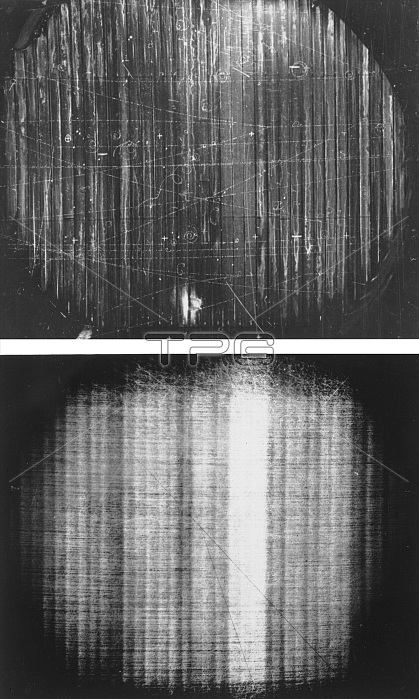
Ticho's anti-kaon beam for xi experiment. Left: separator on three anti-kaon decays. Right: separator off, giving heavy beam. August 18, 1959. Bubble Chamber-806. The Xi baryons or cascade particles are a family of subatomic hadron particles. Like all baryons, they contain three quarks: one up or down quark, and two more massive quarks. They are historically called the cascade particles because of their unstable state; they decay rapidly into lighter particles through a chain of decays. The first discovery of a charged Xi baryon was in cosmic ray experiments by the Manchester group in 1952. The first discovery of the neutral Xi particle was at Lawrence Berkeley Laboratory in 1959. In particle physics, a kaon, also called a K meson, is any of a group of three mesons distinguished by a quantum number called strangeness. In the quark model they are understood to be bound states of a strange quark (or antiquark) and an up or down antiquark (or quark). Kaons have proved to be a copious source of information on the nature of fundamental interactions since their discovery in cosmic rays in 1947. They were essential in establishing the foundations of the Standard Model of particle physics, such as the quark model of hadrons and the theory of quark mixing. Harold K. Ticho, Emeritus Professor of Physics, University of California, San Diego: was awarded Guggenheim Fellowships in 1966, 1973.
| px | px | dpi | = | cm | x | cm | = | MB |
Details
Creative#:
TOP22170522
Source:
達志影像
Authorization Type:
RM
Release Information:
須由TPG 完整授權
Model Release:
N/A
Property Release:
No
Right to Privacy:
No
Same folder images:

 Loading
Loading